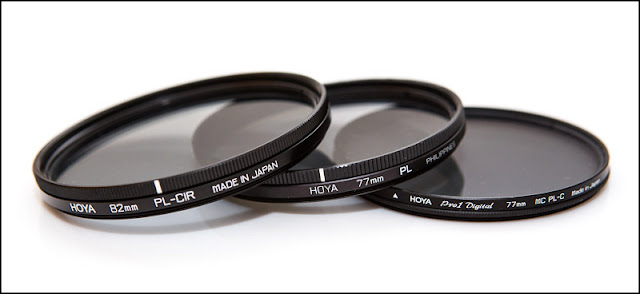 |
| Click here to view image source. |
I decided to test my polarizer in a parking lot in a recreational area in Richmond. For this exercise, I placed my camera on a tripod to ensure that all of the images were identical in framing. I used a Fuji X-E1 body and my newish Laowa 10mm F 4.0 lens. I chose the Aperture Priority exposure mode. I can't give complete exposure information because manual lenses do not provide aperture values for the EXIF data, but if memory serves, the aperture was set to F 8.0. No adjustments to exposure (Levels) were made in post processing.
Camera Position: If you look closely at the orange pole, you notice that it has no visible shadow. The camera was positioned to yield perfect front lighting conditions. If the "Finger Point Rule" is followed, one's extended thumb would trace a line parallel to the horizon. This was meant to minimize the uneven darkening of the sky seen in my earlier side-lit photos that I made in Sausalito.
First Pair, Exposure Compensation Value = 0: The photo on the left was made without the polarizer, the one on the right, with. After making the first shot (left), I rotated the polarizer to achieve the maximum effect, and held it in front of the lens while the exposure was made (right).
Second Pair, Exposure Compensation Value = -1 Stop: The photo on the left was made without the polarizer, the one on the right, with. You can see that the polarized image on the right has a dramatically darkened the sky. But when compared to the unpolarized image on the left, reducing the exposure by - 1 stop produced a similar effect.
My dad used to say the every black and white print needs to have one true white and one true black. I have applied this rule to my color shots. A black and a white reference point helps to convince the viewer that the colors are "true", even though the use of the polarizer and the overall underexposure yield a saturated, almost surreal, interpretation.
Conclusion: For the moment, it appears that one full stop of underexposure can nearly duplicate the effects created by a properly oriented polarizing filter in a perfect, front lit environment. Earlier, less formal testing demonstrated the limitations of the filter when used in side lit situations. Also, the banding, shown here in a photo made during the late afternoon appears to validate the Finger Point Rule (band of maximum darkening following the arc indicated by the outstretched thumb). It may also validates the warning about using wide angle lenses with polarizers, but the images made in Richmond seem to show that " It ain't necessarily so" in all circumstances.In this final shot (same lens, with polarizer), you can see that I changed my position. The shadows indicate that the sun is coming from high over my left shoulder, but the image is basically front lit. The top edge of the frame has been darkened, and is darker still in the upper left and right corners, no doubt due to lens vignetting. It's still a pleasing photo, subject matter notwithstanding. But knowing what I know now, I will be more likely to underexpose the image before reaching for my polarizing filter and its requisite adapter ring.




No comments:
Post a Comment